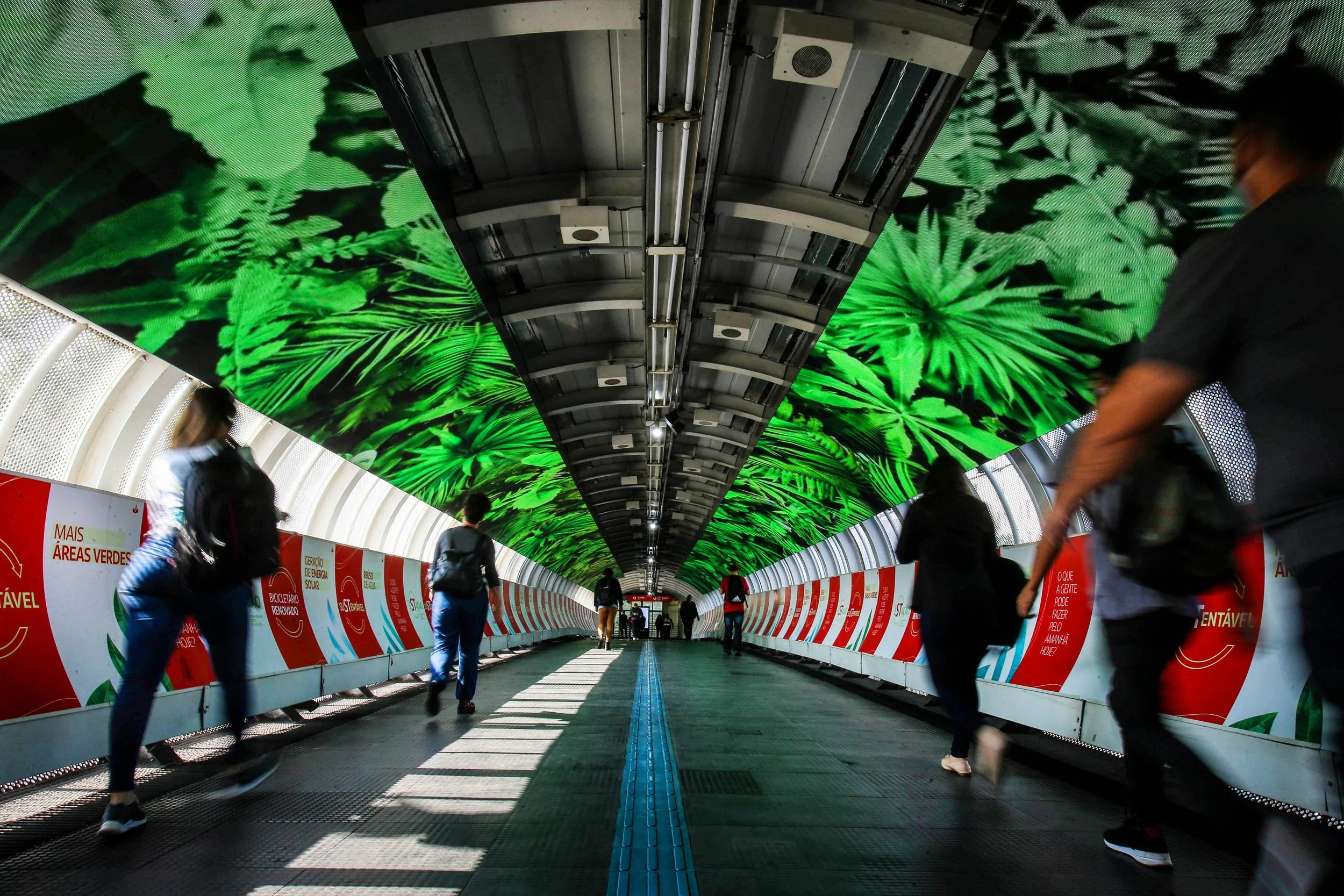I spearheaded Santander’s initiative to transform São Paulo’s Vila Olímpia station—originally part of CPTM’s Line 9—into the first sustainable train station in Brazil, marking a pivotal shift toward eco‑responsibility in public infrastructure. This two-year project was delivered in partnership with the São Paulo state government, Eletromidia, and CPTM, with Santander as the primary sponsor and responsible for the station’s maintenance over three years. I led the creative direction and storytelling strategy around fourteen key sustainability interventions:
We installed 234 photovoltaic solar panels, generating approx. 8,500 kWh/month—enough to eliminate a R$300k annual electricity bill
We oversaw implementation of 46,000 L water‑capture and reuse systems, saving around 150,000 L monthly by redirecting treated rainwater for toilets and irrigation
A new 90-bike parking facility, with bike ramps and e-bike charging points, shifted commuting patterns and reduced CO₂ emissions by 360 kg daily
We introduced vertical gardens across 1,454 m², nine native plant species, recycled-material benches, USB-charging drinking fountains, rain shelters, and selective-waste collection stations
I curated interpretive information panels and digital displays within the new LAB, explaining the technology behind solar capture, water treatment wetlands, pollution mitigation for the Pinheiros River, and alternative transportation
Artistic integration included a striking Eduardo Kobra mural—10.7 m × 2.6 m—depicting a historical Pinheiros River scene, weaving cultural meaning into the station’s green transformation.
By crafting the narrative architecture—video displays, signage, experiential zones, and a media campaign narrated by climate advocate Anna Luísa Beserra—I positioned the station not only as a green infrastructure milestone but also as an educational, cultural, and architectural statement.
The result was a fully self-sustaining station during sunny and rainy months, significantly reducing public spending and inspiring other corporations and government entities to replicate the model. Vila Olímpia now serves daily over 35,000 commuters and stands as Brazil’s flagship sustainable transit hub—bringing clean energy, circular water use, and eco-friendly urban design into the heart of São Paulo’s transportation network.



